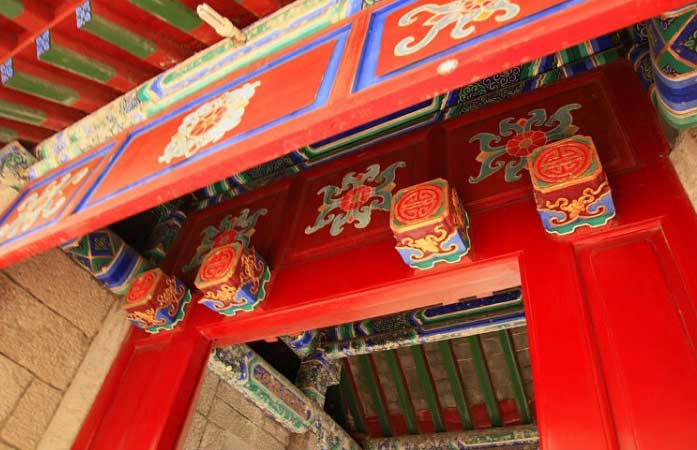Mount Laoshan – Laoshan Mountains
Laoshan is a famous mountain in Qingdao, Shandong province, China. It lies about 30km east of the downtown Qingdao, and is an important tourist destination. It is the highest coastal mountain in China, peaking at 1132.7m. It is known as one of the birthplaces and activity center of Chinese Taoism. Overlooking the sea, the mountain is characterized by the imposing canyon and undulating peaks and mystery mist.
Laoshan Mountain is said to be home of “supernatural Spirits”. In Qin Dynasty (BC 221- BC 206), the first emperor Qinshihuang once came here trying to meet the so called supernatural beings. In the Tang Dynasty (AD 618 – AD 907), the emperor Lee Longji also traveled here to search supernatural medicines for an eternal life. Along the long history many famous scholars visited Laoshan Mountain and wrote poems and essays applauding the mountain and its history. Mountain Laoshan is also known for being the place of the second largest Quanzhen Group of Taoism – complete reality school of Taoism– in history. In its heyday, there were nine great palaces, eight great temples, and 72 nunneries. Taoists from Laoshan Mountain gained their fame for their knowledge, legendary skills and stories.
Among the Laoshan Taoist figures in history the most famous were Qiu Changchun and Zhang Sanfeng. The former was a legendary figure in Yuan Dynasty (AD 1206– AD 1368) on account of his long journey riding a donkey to today’s Afghanistan advising Genghis Khan on less killing, the latter was said to be the creator of Taichi Chuan. In 412 the Chinese Buddhist pilgrim Faxian landed at Laoshan on his return from India.
.
Many of the Taoism temples and nunneries in Laoshan Mountain have been destroyed or ruined in the years past. The present preserved Taiqing Palace Taoism Temple is the largest and oldest one, built at the beginning of North Song Dynasty (AD 960-AD 1,127). Another name for the temple is Xiaqing Palace Temple. Sanhuang Palace, part of the Taiqing complex, has two ancient Cypress trees, said to have been planted during the Han Dynasty. In Taoism they hold there are three levels in heaven, i.e. Yu Qing, Shan Qing and Tai Qing. Among them Tai Qing is a heaven where supernatural beings dwell and is the most highest and sacred one. Taiqing Palace, consisting of Sangong Palace, Sanhaung Palace and Sanqing Palace, looks grandeur even of very simple style. There are two very old cypresses in Sanhuang Palace, which were planted in the Han Dynasty (BC 206-AD 220 ). Another old rare camellia in front of the Sanhuang Palace has been 700 years old. The tree is 8.5 meters high and the diameter of trunk reaches 1.78 meters. In winter days the trees remain green still and different flowers are blooming most often.
There are many scenic spots around the Taiqing Palace Temple, such as the Shenshui Spring, Longtou Yu, Stone Inscription and so on. People are chanced to catch the sight of flyaway mirage sometimes.
There are odd stones and cliffs and odd caves in Laoshan Mountain, yet most of them are covered by clear springs and waterfalls. The roads are curved away into distance.
The famous ghost story teller Pu Songling was a writer in Qing Dynasty (AD 1,644- AD 1,911). His story book Strange Tales of a Lonely Studio based the background of the legends on mount Laoshan and the stories of supernatural spirits and ghosts had more or less connection with this mountain and Laoshan Taoists.
Laoshan Mountain is also famous for its spring water. On the road leading to the main peak, there is a spring named Tianyi Spring. There are many springs, like Shenshui Spring of Taiqing Temple and Shenshui Spring of Shang Qing Temple. Laoshan mineral water is a local specialty and is said to have therapeutic effects.
OPENING HOURS
| Week Days | 8:00 – 5:00 |
| Saturday | 9:00 – 5:00 |
| Sunday | 11:00 – 4:00 |






















